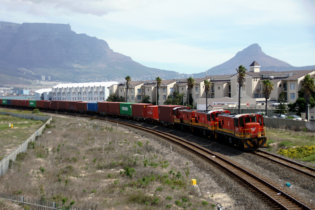Strong and unexpected market growth best characterises the performance of import container trade into South Africa for the first half of 2015.
This is according to the Maersk Trade Report South Africa: Second Quarter 2015, which reveals 7% year-on-year growth for the total South African container market. By comparison, a market decline of 5% was experienced in the first half of 2014. Matthew Conroy, trade manager of Maersk Line Southern Africa, says the growth defies the weak economic fundamentals, low consumer confidence and slow GDP growth in the country. “Most of this growth can be attributed to imports into South Africa, which have risen by 11% year-over-year. Specifically, there has been a 15% increase in imports of clothing and household goods, which are predominately sourced from Asia. “It is important to note that the total import market size is only now back to the size it was in the first half of 2013. The growth is, therefore, more of an economic rebound, as opposed to consistent economic growth.” Conroy believes the outlook for the second half of 2015 is positive, albeit not as positive as in the first half. “It is predicted that the import market will experience a steady uptick, with expected growth ranging from 1% to 2% year-on-year, mainly due to strong performance during the second half of 2014, which set the bar very high for 2015.“In order to see higher import growth, we need to see healthier economic fundamentals at play, specifically a higher level of consumer confidence, bearing in mind that the majority of imports are consumable in nature, such as clothing and household goods,” he says.
Conroy predicts that dry exports – mostly mining commodities – will pick up slightly, growing by 3 – 4% during the second half of this year. He says growth during the second quarter of 2015 was much stronger when compared to the first quarter year-on-year, and that there has been a clear positive growth trend in the underlying year to date data, which is expected to continue into the rest of 2015. “The dry container export market, which consists mostly of mineral commodities, has seen virtually no growth as a result of lower commodity prices and China’s slowing GDP growth. This trend is likely to continue and there will be less commodity consumption for the rest of 2015, unless China’s growth improves,” says Jonathan Horn, managing director of the company. Horn adds that the local refrigerated export market has grown by 10%. “This is largely due to the fact that South Africa experienced better weather and crops of apples, pears and grapes this year, whereas in the first half of 2014 crops were very poor due to various weather-related incidents.” “We expect that this growth will come from commodity exports to Asia and the Middle East as well as automotive exports to Europe,” he adds. Refrigerated exports are also expected to grow marginally – in the 2-3% range in the second half of the year, mostly on the back of citrus exports. However, this increase is susceptible to European Union policy changes regarding ‘Citrus black spot’, which could potentially impact South Africa’s citrus exports to the region.







